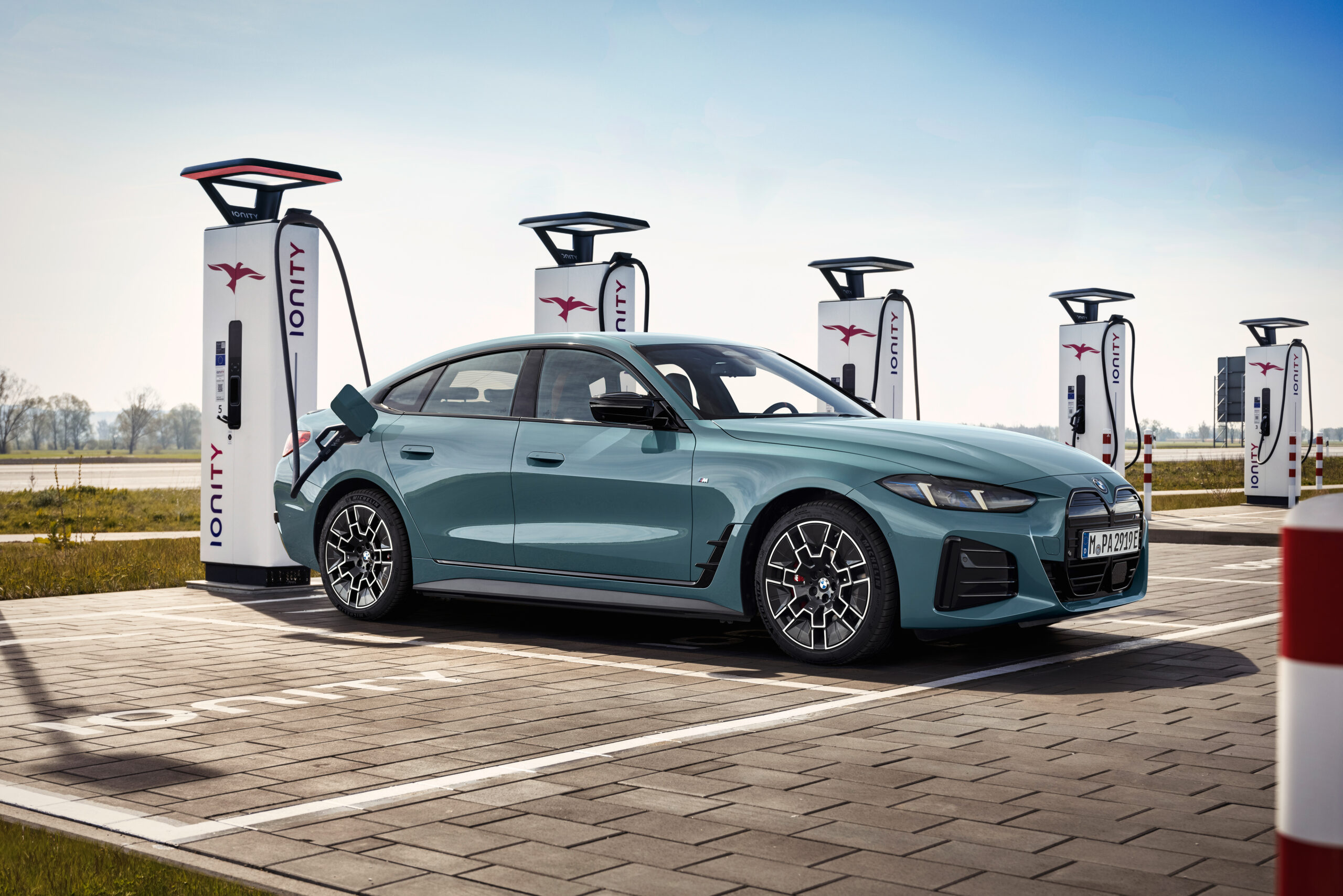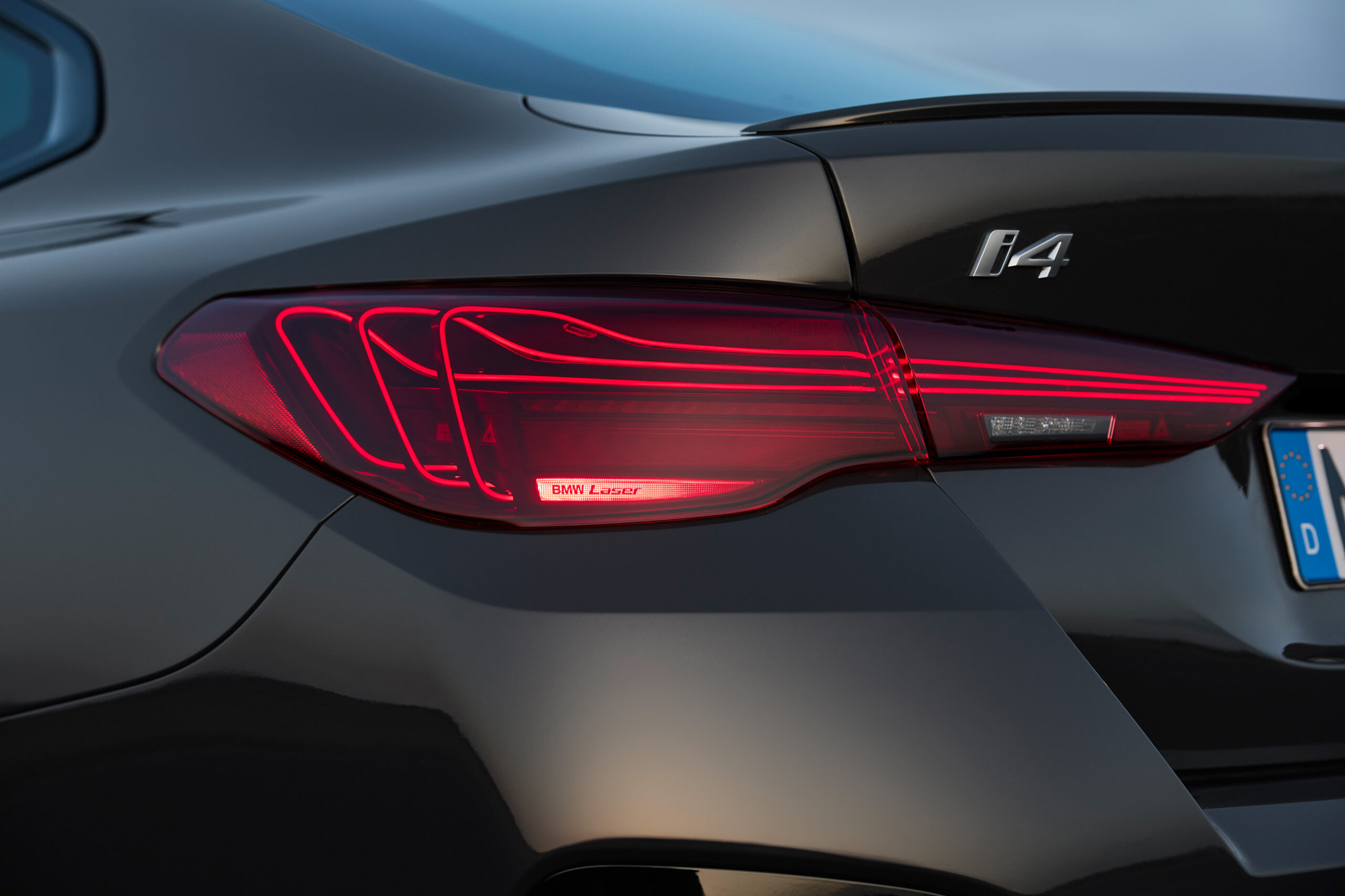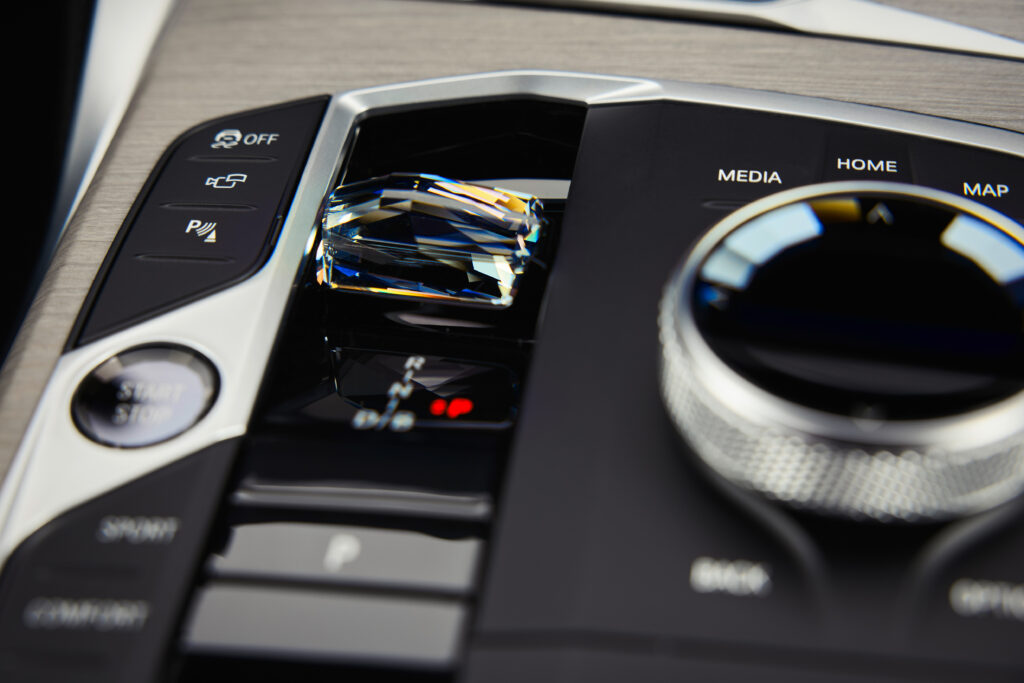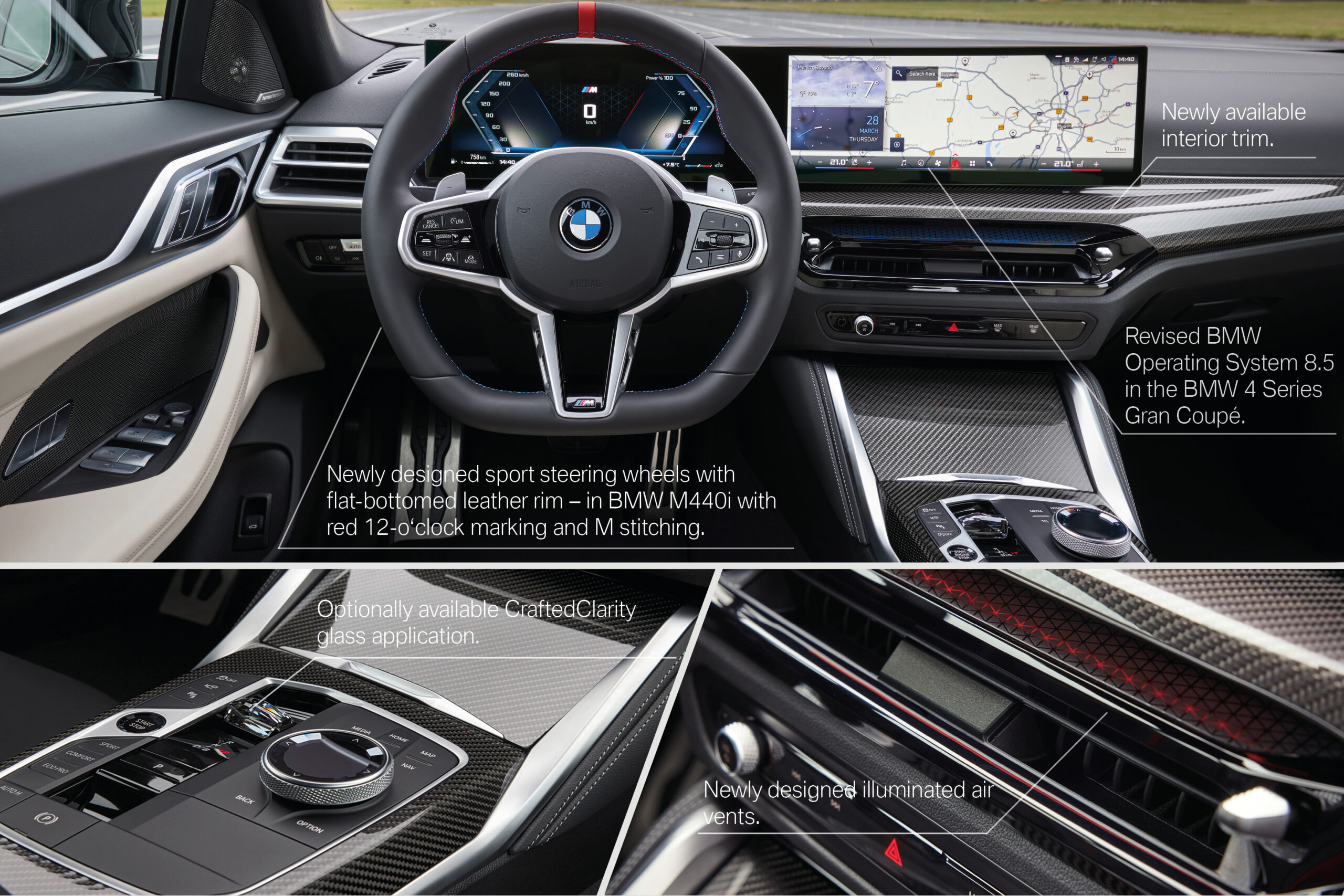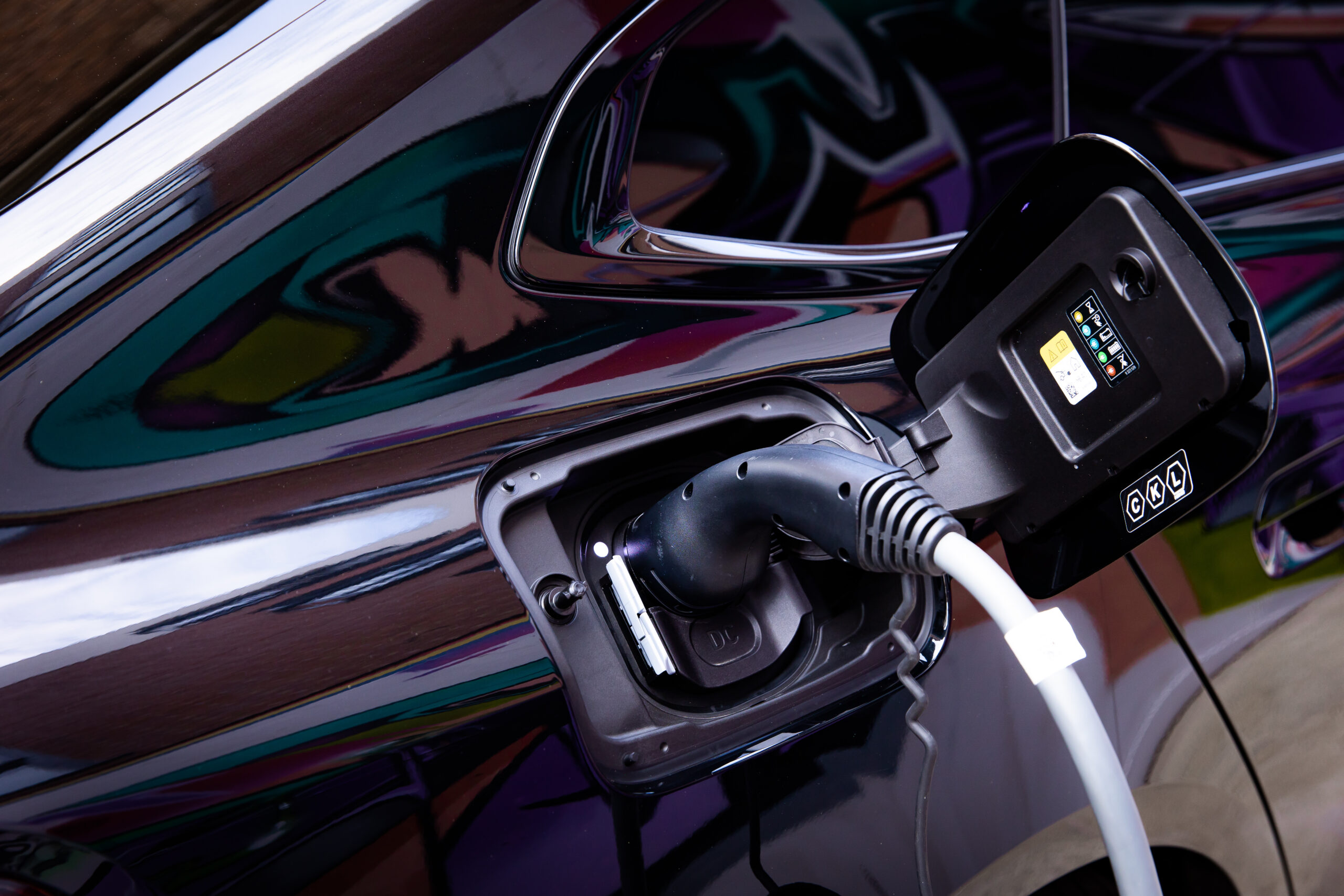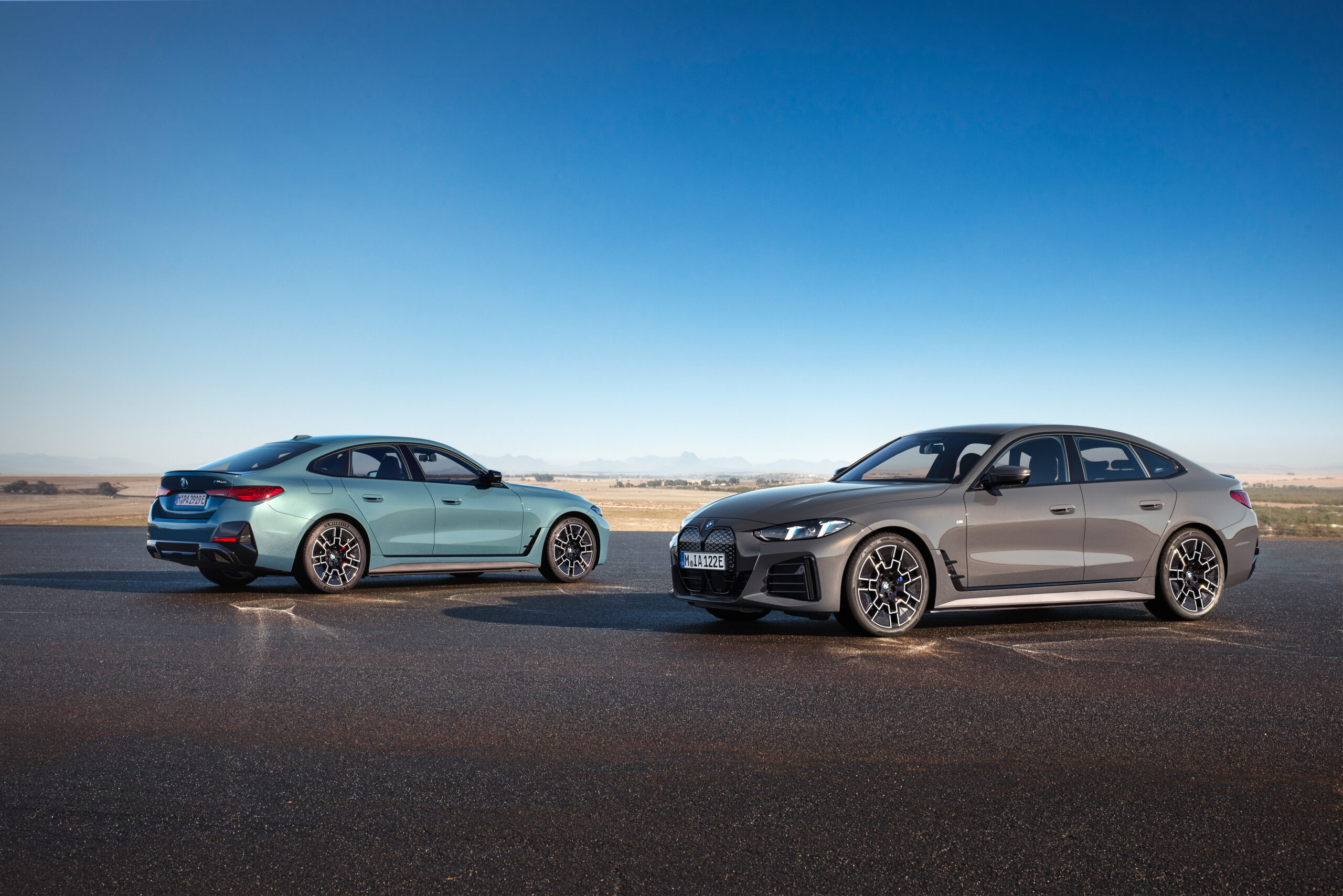Hit the road with a sporty look and all-electric power in the new BMW i4. The redesigned headlights and front grille accentuate the athletic nature of the vehicle, with the redesigned rear lights providing elegant aesthetics at the rear of this luxury, electric coupé. The contemporary atmosphere is enhanced by the new steering wheel design and waterfall ambient lighting in the interior.
RANGE OVERVIEW
BMW i4 MODELS
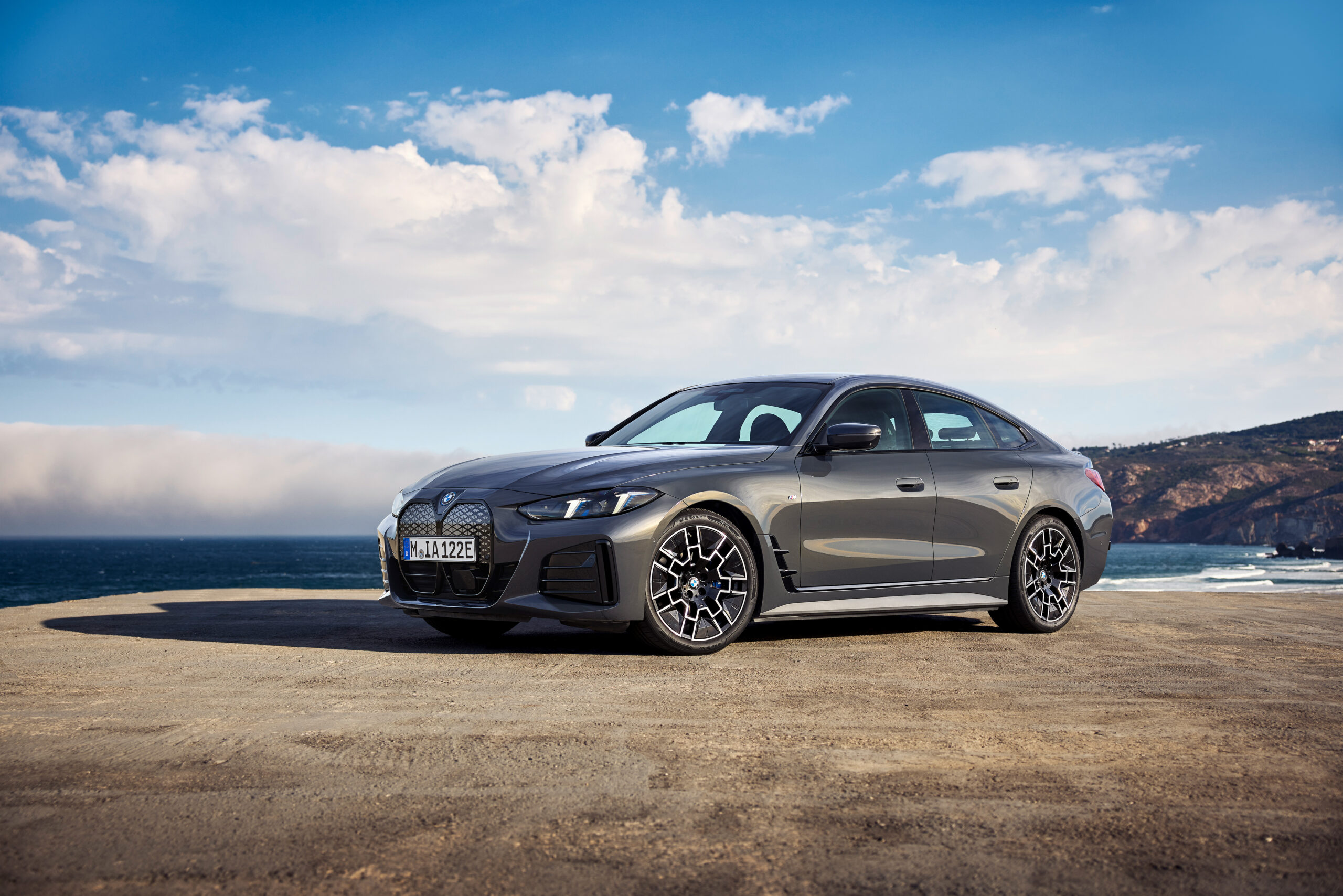
BMW i4 eDrive40 M Sport Gran Coupé
ELECTRIC · 336 – 352 MILES [1][2]
Every facet of the new BMW i4 eDrive40 M Sport Gran Coupé reveals its sporty character. Its powerful electric drive accelerates from 0-62 mph in 5.6 seconds[2]. And its range of 336 – 352 miles gets you to your destination in comfort[1][2]. A two-tone rim design and slimline front lights ensure that it stands out from the crowd. In the interior, M PerformTex sport seats in Black ensure support, while redesigned air outlets keep the atmosphere nice and fresh. Stay connected while on the go with digital services, such as the BMW Intelligent Personal Assistant.
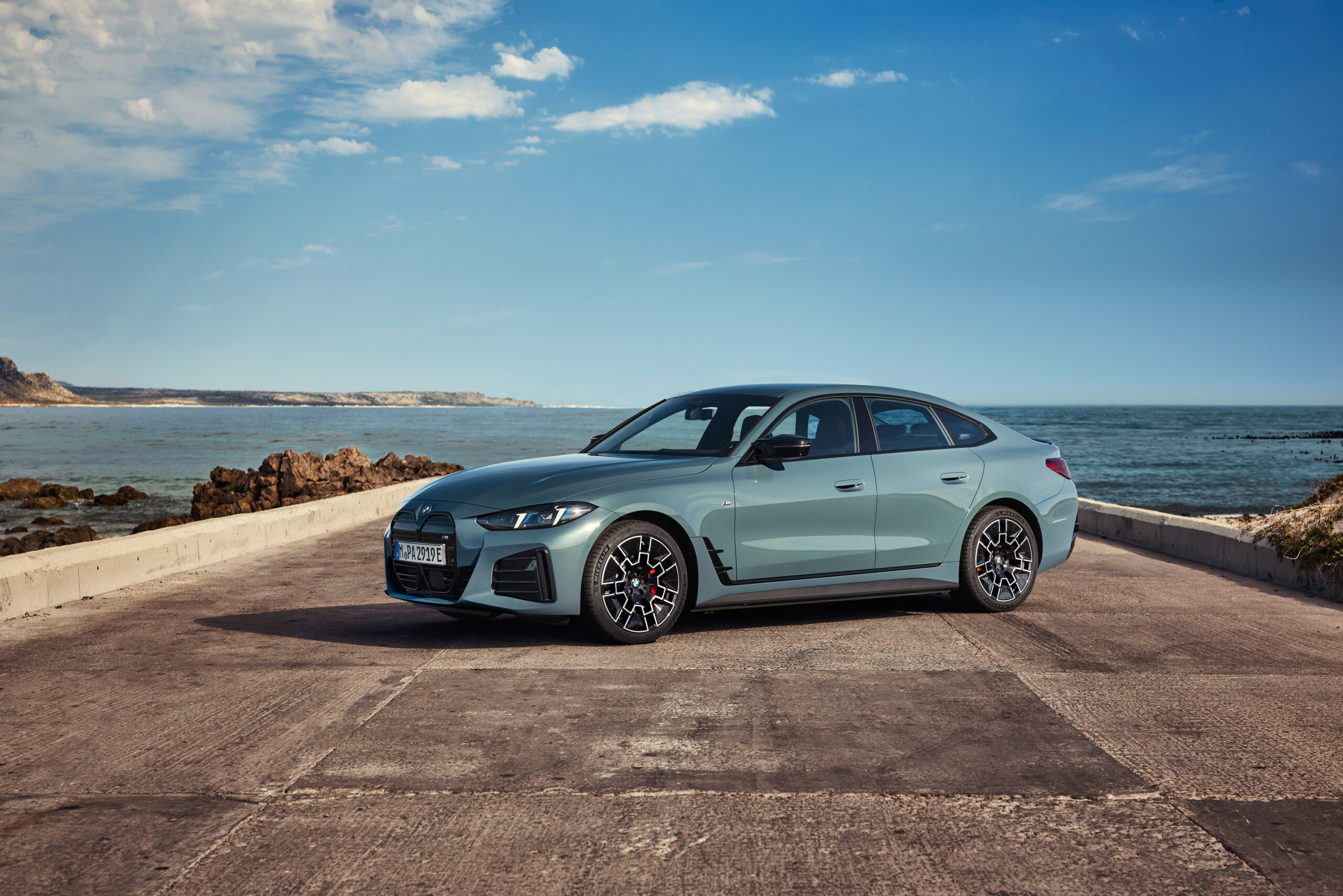
BMW i4 M50 Gran Coupé
ELECTRIC · M · 318 MILES [1][2]
The fully electric drive of the BMW i4 M50 accelerates from 0-62 mph in 3.9 seconds[2]. The athletic look, typical of M models, is immediately apparent: a redesigned front and rear end with optional M Sport Spoiler and optional Adaptive LED Headlights. Inside, optional Front M Sport Seats and the new standard M Sport Leather Steering Wheel exude that M feeling.
ELECTRIFYING PERFORMANCE
The BMW i4 combines next-level performance with modern comforts to deliver a truly outstanding driving experience. Equipped with fifth-generation BMW eDrive technology, the BMW i4 M50 delivers up to 544hp, while the BMW i4 eDrive40 offers up to 365 miles[1] in range. Add to this the spacious interiors, and the new BMW i4, quickly becomes the perfect companion for any journey.
